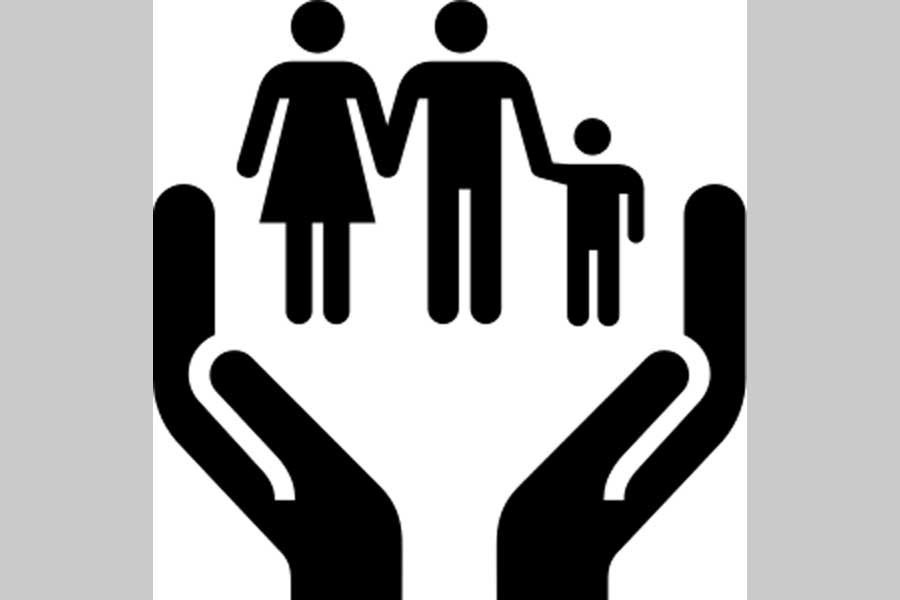In the midst of a global pandemic, it's hard to think of a policy that would improve people's wellbeing more than universal social protection.
If people are to self-isolate to contain the virus, families need sickness and unemployment benefits to survive. If we're to test, trace and treat people when they're unwell, health care needs to cover everyone, everywhere. To shield the most vulnerable when jobs are lost or earnings plummet, a minimum level of social protection - a social protection floor - is vital.
As the impact of the pandemic continues to reverberate across the region, low income workers, young people and women are the most likely to be unemployed. Radically extending basic social protection coverage could stop them falling into poverty.
Today, only a handful of countries in our region have social protection systems with broad coverage. Over half the population has no social protection coverage whatsoever.
Despite recent ad hoc measures to respond to the pandemic, more than a quarter of the population has no health coverage. Benefits for children, the unemployed, persons with a disability or, victims of an employment injury are the preserve of less than a third of the population. Maternity benefit coverage is only slightly higher. The vast majority of workers in the informal economy whose earnings declined by some 20.0 per cent in the first months of the crisis are uncovered and unprotected.
The uncomfortable truth is that underinvestment in social protection is chronic in many parts of Asia and the Pacific. The region's public expenditure in this area, standing at an average of 7.0 per cent of Gross Domestic Product (GDP), is well below global average of 11.0 per cent. It is also less than in Latin America's emerging economies and less than half the amount spent in Europe. In many countries in South Asia, South-East Asia and the Pacific, public expenditure on social protection is as low as 2.0 per cent of GDP, grossly insufficient to respond to the unexpected.
There is another way. For countries in the region the required investment of establishing basic social protection for all children, older persons and persons with disabilities is between 2 per cent and 6 per cent of GDP, as set out in the United Nations (UN) Economic and Social Commission for Asia and the Pacific (ESCAP) report 'The Protection We Want.'
To some, this may sound expensive. However, the price tag is low considering the alternative.
Financing strategies should include prioritization and reallocation of existing public spending, but also a broadening of tax bases and the steady formalization of employment. Recent evidence from Japan, Mongolia, the Republic of Korea and Thailand demonstrates unequivocally how investments in social protection support GDP growth.
If money is key, so is a change of mindset. Many countries have long eschewed universal schemes in favour of targeted non-contributory benefits. And at a first glance, this seems fair. Does it not make sense to channel limited resources to the poorest in our communities? Many initiatives to expand non-contributory schemes have been shaped by this assumption. But in practice, it is extremely hard, and often costly, to correctly target those defined as poor by national poverty thresholds.
While, well-intended, the result is inefficiency and unfairness. The region's best performing poverty-targeted schemes exclude almost half those who need them the most. A significant proportion of benefits also goes to individuals and households who are not intended recipients. Administrative hurdles and obsolete data systems for identification and civil registration, as well as the absence of redress mechanisms compound difficulties in reaching the poorest households. 135 million children under five in our region are not counted by existing civil registration systems. If targeted schemes make sense in theory, in practice they deprive families, individuals and children of desperately needed relief.
Only universal social protection systems can deliver the necessary support. A pragmatic mix of schemes could ensure the protection of all. A minimum level of social protection should be provided for everyone regardless of prior income or employment, while additional protection should be extended through contributory schemes. Properly designed, these schemes support gender equality by better rewarding unpaid care work, particularly if complemented by subsidised child-care services. Non-contributory schemes can boost coverage quickly to all age groups, especially in low and middle-income countries.
The pandemic has proved wrong those who question the value of universal social protection, those who baulk at its cost and quibble its benefits. It has shown social protection to be essential to keep us safe, and led to hundreds of ad hoc measures and new schemes hurriedly rolled out. It has also demonstrated how much more effective well-established universal social protection schemes are to respond to a crisis than measures taken while one is unfolding. The governments from across the region have an opportunity to accelerate efforts to build universal social protection schemes in our region. They must be ambitious. That is the protection we want in Asia and the Pacific.
Patrik Andersson is Chief of Sustainable Socioeconomic Transformation Section, UNESCAP. Nuno Meira Simoes da Cunha is Senior Specialist on Social Protection, UNESCAP
The piece first appeared in UNESCAP Blog. [Source: https://www.unescap.org/blog/protection-we-want]


